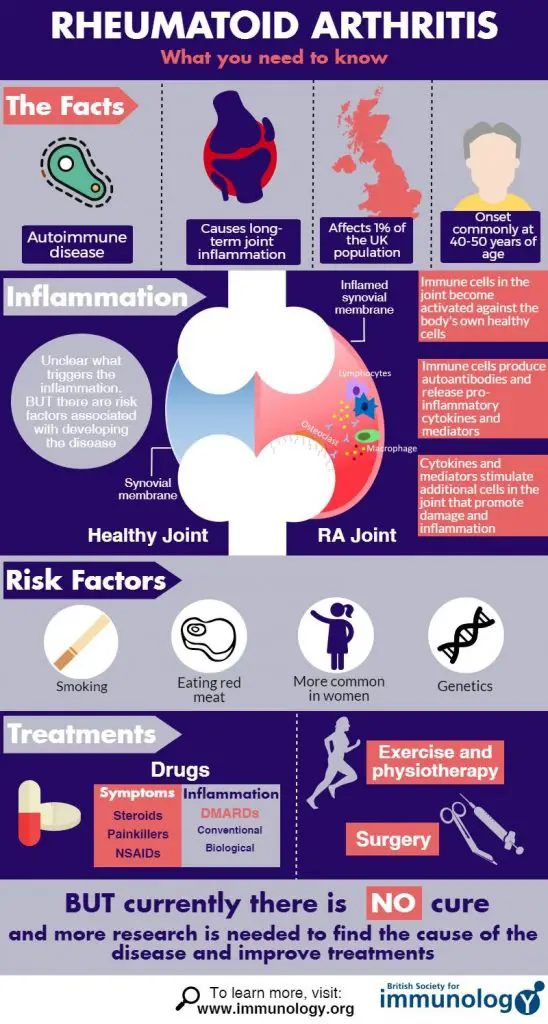So, we all want to know the latest news and developments in the Treatment and Potential cure of Joint Pain for 2019/20.
How far away ARE we from popping a pill for it and feeling right as rain again?

Let’s find out together…..
Arthritis and other diseases featuring joint pain have been almost in-curable in the past and are caused by an interplay between genetics and environmental factors, and there’s still much to discover about the biochemistry and treatment options of these ailments.
The scientific community is continuously taking new steps towards better prevention strategies and improved quality of life of people suffering from osteoarthritis, rheumatoid arthritis, and other causes of joint pain.

More than 90% of people over the age of 65 years endure various degrees of joint pain. That is why there’s currently a lot of research around the topic.
As a result, minimally invasive surgery is becoming more available to people with osteoarthritis. At the same time, many dietary tips and new drugs are being developed and evaluated through clinical trials in order to improve the symptoms of rheumatoid arthritis.
In my brief article as a medical professional, I will walk you through some of the most recent scientific findings associated with various types of joint pain, and how these have provided new treatment options and several clues to improve your quality of life.
Latest Breakthroughs Rheumatoid Arthritis
Rheumatoid arthritis is a degenerative disease that affects the cartilage of the joint through an inflammatory reaction that destroys the healthy tissue and causes deformation in the extremities. The most common ways to treat arthritis is through pain killers and steroid shots to control flare-ups.

However, a novel therapeutic approach that is under active research is treating rheumatoid arthritis with a component found in brown algae, a polysaccharide called alginate.
Alginate has been found to reduce oxidative stress and suppress the inflammatory reaction in human cartilage. This natural component is a non-steroid candidate treatment to slow down cartilage degeneration and stop the progression of the disease.
However, there’s an inexpensive treatment that arthritis patients can use right now. According to recent research by the Medical College of Georgia, baking soda is on the spotlight as an immune modulator that works by sending cholinergic signals and reducing inflammation in many different tissues. An inexpensive habit such as a small dose of baking soda every morning might prove useful as a side therapy to improve the inflammatory symptoms in rheumatoid arthritis.
More scientific advancements have made their way into the pharmaceutical industry as well. The new drug is called upadacitinib. It inhibits an enzyme called Janus Kinase 1 and reduces the inflammatory response by disrupting the signaling pathway. The results so far point out that upadacitinib is a safe and efficient drug with a quick response to treatment and useful in patients that have not found relief of their symptoms with the conventional therapy.
Another promising advance is being developed by a group of scientists from the famous Massachusetts Institute of Technology (MIT). These researchers came up with nanocarriers specialized in delivering a substance called insulin-like growth factor 1 (IGF-1) into the cartilage. It is known that this substance contributes to the formation of healthy tissue in the affected joint, but so far, researchers were unable to expose cartilage to effective dosages of IGF-1. After injecting the substance, it wore off before being able to penetrate the affected cartilage.
With these dendrimer-based nanocarriers, IGF-1 is now able to penetrate the deepest layers of joint cartilage, stimulating its growth and promoting an actual healing process of the degenerative disease. In other words, this breakthrough might become the first line of treatment capable of reversing the degenerative process of arthritis and providing more than symptomatic relief.
New Treatments for Osteoarthritis
Osteoarthritis might not be as popular as rheumatoid arthritis, and most people don’t know the difference between them both. However, the reality is that osteoarthritis is much more common than rheumatoid arthritis. It is the most prevalent musculoskeletal disease, and one of the leading causes of disability. According to data from 2013, the costs of osteoarthritis in the UK rises near £ 15 million every single year, which is a considerable amount we could save by having an effective and safe treatment besides joint replacement surgery.
New Stem Cell Therapy is available. Watch video below for more information!
Similar to rheumatoid arthritis, osteoarthritis is a degenerative disease of the joint. Instead of an autoimmune disease, it is a mechanical problem causing wear and tear in the articulation and progressively leading to a destruction of the bony ends of the joint. This is the reason why many osteoarthritis patients under-go joint replacement in a late stage of the disease.
Advances in the field of surgery have brought non-invasive techniques that improve the outcomes of the procedure while reducing the time of rehabilitation. However, recovery time depends on each patient, and some would not be good candidates for joint replacement surgery because of their age, weight, and other health issues.
That is why a recent study published in the journal Nature Genetics analyzed more than 77,000 osteoarthritis patients discovering a series of genes associated with a double risk of suffering from this ailment. The good news is that there are drugs under research or already approved for osteoarthritis patients targeting at least 10 of these high-susceptibility genes. One of them is already being used for knee osteoarthritis, under the name INVOSSA. It is a gene therapy drug for knee osteoarthritis administered as an intra-articular injection that modifies the function of chondrocytes and improves osteoarthritis both safely and effectively, with no negative reviews or side effects as of now. This is an extremely new area of research and treatment. Find out more about CRISPR.
The only problem with INVOSSA is that one single shot is particularly expensive, it is only licensed in 22 Asian countries, and it is actually undergoing a series of scandals that led the selling company to suspend sales on April 2019.
A non-surgical treatment option for osteoarthritis has been made available as well, and it is called geniculate artery embolization. It is a minimally invasive technique consisting of a blockage of selected capillaries and arteries through a pinhole-sized incision that would reduce pain and inflammation in these patients.
In the first clinical trial to test for this procedure, which was performed in 2018, patients reported a significant reduction in their pain symptoms days and even months after the procedure. This medical procedure is still in clinical trials and under active research to know whether or not it is feasible in all patients and who is the best candidate for this type of procedure.
A latest Study on Joint Pain Research has uncovered interesting findings.
with thanks www.ncbi.nlm.nih.gov
Another non-invasive procedure with long-term effects in improving the symptoms of osteoarthritis is called cooled radiofrequency ablation. It is known to be even better than steroid treatment and gives patients lasting relief to their symptoms. This treatment consists of an interruption of pain transmission by using radiofrequency energy directed to the genicular nerve in the knee. It requires local anesthesia only and significantly reduces the pain score from an average of 7 to an average of 3 on a 10-point scale. Thus, this is an advantageous medical approach to use as a substitution to intra-articular steroid shots.
There are more advances in the field of osteoarthritis apart from medical procedures and the pharmaceutic world.
Since the gut-brain axis was explained, a lot of research has been focused on gut microbiota changes and how they reflect in the rest of the body. In this regard, a group of scientists from the University of Rochester Medical Center found that certain gut bacteria increase the risk of osteoarthritis, speeding up its progression, and aggravating the symptoms.
Conversely, by increasing the colonization by certain strains of Bifidobacteria, a common yogurt additive, pro-inflammatory bacteria is depleted, and the symptoms of osteoarthritis are improved. Oligofructose and other prebiotics are also beneficial to increase the colonization of Bifidobacteria, and it is recommended to follow a diet without processed foods and refined carbohydrates.
Other types of joint pain
Besides rheumatoid arthritis and osteoarthritis, many other ailments feature joint pain as well. It is common in older adults, and it doesn’t mean they have either of those conditions. It is also common as a result of trauma, but these cases are usually improved after using over-the-counter painkillers, ice, and other commonly known measures.

Still, other causes of joint pain with recent scientific advances include sacroiliac joint dysfunction and Lyme disease. The former is a cause of lower back pain that extends to the buttocks or the groin, it is often disabling, and there is not much high-quality scientific evidence about the available treatment.
The latter is a bacterial infection transmitted by a tick bite that is often treated with doxycycline and usually causes persistent fatigue and joint pain.
In the past, sacroiliac joint dysfunction was treated with active stretching and other physiotherapy procedures with moderate improvement of the symptoms. Even accurate diagnosis was difficult.
How can I take advantage of these new Treatments and Cures?
Now you must realise the latest treatments will not be available on our public NHS. One must look to taking out a private insurance policy. However, nowadays with the latest private research, it is possible to diagnose this condition with a higher degree of sensitivity and specificity, and minimally invasive techniques have been developed to improve the symptoms by fusing the sacroiliac joint. We have reviewed the best Private Medical Insurance PMI in the UK. A recent review of the scientific literature on the subject gathered the scientific evidence to recommend different treatment choices and reached to the conclusion that these patients should undergo conservative treatment for at least 6 months before trying a minimally invasive fusion of the sacroiliac joint.

On the other hand, Lyme disease is usually treated with antibiotic treatment, but many patients have persistent symptoms and undergo a post-treatment syndrome as well, maybe because of a dormant quality of the bacteria that activates afterward under stressful conditions.
New research from the Johns Hopkins University showed that garlic essential oil along with thyme leaves, cinnamon bark, and others show strong antibacterial activity against persistent Lyme disease, killing bacteria more effectively than the standard antibiotic therapy.
All of these recent scientific advances lead us to think there’s still much more to know about joint pain in their different variants. As we grow our understanding of diseases and their causes, it is possible to find better alternatives to improve the quality of life and prognosis of patients with degenerative joint disease and other causes of joint pain.

As a quick summary of the information, we have prepared the following table about the most recent scientific findings in the field of rheumatoid arthritis and osteoarthritis and their applications:
| Disease | Findings | Applications |
| Rheumatoid Arthritis | Alginate from brown algae reduces oxidative stress | When applied to human cartilage in vitro, it slows down cartilage degeneration and stops the progression of the disease |
| Baking soda modulates inflammation in various tissues through cholinergic signaling | A small dose of baking soda every day is an inexpensive way to improve inflammatory symptoms in arthritis | |
| Upadacitinib reduces the inflammatory response by disrupting the signaling pathway | Clinical trials show it is a safe and effective drug in patients with persisting symptoms | |
| Insulin-like growth factor 1 (IGF-1) speeds up cartilage recovery | Through specialized nanocarriers, it is now possible to deliver IGF-1 into deeper layers of cartilage, with the possibility of reversing the degenerative process in arthritis | |
| Osteoarthritis | 10 genes identified to double the risk of suffering osteoarthritis | Gene therapy with INVOSSA is made available to safely and effectively change these genes in the affected tissue with a single intra-articular shot. |
| Pain symptoms are successfully reduced by blocking selected arteries in the knee | Geniculate artery embolization is under research as a potential candidate to improve pain symptoms days and even months after the procedure | |
| Interrupting pain transmission is another way to reduce perceived pain in osteoarthritis | Through cooled radiofrequency ablation, the genicular nerve is blocked through radiofrequency and patients report a significant and long-lasting improvement in pain symptoms | |
| Gut colonization by pro-inflammatory bacteria is known to worsen the symptoms of osteoarthritis and cause flare-ups | Bifidobacteria strains from yogurt and oligofructose from prebiotics is a suitable choice to replace pro-inflammatory bacteria and improve pain symptoms. |
References:
Kerschenmeyer, A., Arlov, Ø., Malheiro, V., Steinwachs, M., Rottmar, M., Maniura-Weber, K., … & Zenobi-Wong, M. (2017). Anti-oxidant and immune-modulatory properties of sulfated alginate derivatives on human chondrocytes and macrophages. Biomaterials science, 5(9), 1756-1765.
Ray, S. C., Baban, B., Tucker, M. A., Seaton, A. J., Chang, K. C., Mannon, E. C., … & Ocasio, H. (2018). Oral NaHCO3 Activates a Splenic Anti-Inflammatory Pathway: Evidence That Cholinergic Signals Are Transmitted via Mesothelial Cells. The Journal of Immunology, 200(10), 3568-3586.
Burmester, G. R., Kremer, J. M., Van den Bosch, F., Kivitz, A., Bessette, L., Li, Y., … & Camp, H. S. (2018). Safety and efficacy of upadacitinib in patients with rheumatoid arthritis and inadequate response to conventional synthetic disease-modifying anti-rheumatic drugs (SELECT-NEXT): a randomised, double-blind, placebo-controlled phase 3 trial. The Lancet, 391(10139), 2503-2512.
Geiger, B. C., Wang, S., Padera, R. F., Grodzinsky, A. J., & Hammond, P. T. (2018). Cartilage-penetrating nanocarriers improve delivery and efficacy of growth factor treatment of osteoarthritis. Science translational medicine, 10(469), eaat8800.
Hiligsmann, M., Cooper, C., Arden, N., Boers, M., Branco, J. C., Brandi, M. L., … & Kanis, J. A. (2013, December). Health economics in the field of osteoarthritis: an expert’s consensus paper from the European Society for Clinical and Economic Aspects of Osteoporosis and Osteoarthritis (ESCEO). In Seminars in arthritis and rheumatism (Vol. 43, No. 3, pp. 303-313). WB Saunders.
Tachmazidou, I., Hatzikotoulas, K., Southam, L., Esparza-Gordillo, J., Haberland, V., Zheng, J., … & Wilkinson, J. M. (2019). Identification of new therapeutic targets for osteoarthritis through genome-wide analyses of UK Biobank data. Nature genetics, 51(2), 230.
Schott, E. M., Farnsworth, C. W., Grier, A., Lillis, J. A., Soniwala, S., Dadourian, G. H., … & Ketz, J. P. (2018). Targeting the gut microbiome to treat the osteoarthritis of obesity. JCI insight, 3(8).
Society of Interventional Radiology. “Minimally invasive treatment reduces knee pain and disability from osteoarthritis: Pinhole incision blocks blood supply to inflamed joint to provide long-term relief.” ScienceDaily. ScienceDaily, 19 March 2018.
Davis, T., Loudermilk, E., DePalma, M., Hunter, C., Lindley, D., Patel, N., … & Buvanendran, A. (2018). Prospective, multicenter, randomized, crossover clinical trial comparing the safety and effectiveness of cooled radiofrequency ablation with corticosteroid injection in the management of knee pain from osteoarthritis.
Whang, P., Cher, D., Polly, D., Frank, C., Lockstadt, H., Glaser, J., … & Sembrano, J. (2015). Sacroiliac joint fusion using triangular titanium implants vs. non-surgical management: six-month outcomes from a prospective randomized controlled trial. International journal of spine surgery, 9, 6.
Feng, J., Shi, W., Miklossy, J., Tauxe, G., McMeniman, C., & Zhang, Y. (2018). Identification of Essential Oils with Strong Activity against Stationary Phase Borrelia burgdorferi. Antibiotics, 7(4), 89.
